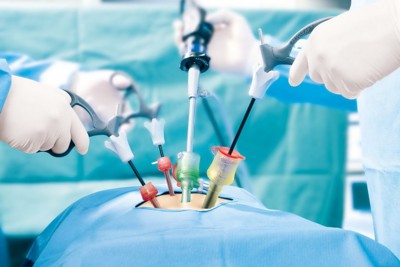Surgeries Performed With Laparoscopy
- Diagnostic Laparoscopy
- PCOD Drilling
- Endometriosis
- Choculate Cyst
- Ectopic Pregnancy
- Rectovaginal Endometriosis
- Ovarian Cyst
- Dermoid Cyst
- Laparoscopic Fibroids
- Laparoscopic Tubal Reversal
- Laparoscopic Burch’s Procedure
- Laparoscopy for T.O.Mass
- Laparoscopic Adhesiulysis
- Laparoscopic Vaginoplasty
- Total Laparoscopic Hystrectomy
- Laparoscopic Vault(Post-hystrectomy) Repair
- Laparoscopic Tubal Ligation
- Laparoscopic Prulapase Repair with Preserving Uterus
- Laparoscopic V.V.F. (Vesico-Vaginal Fistula) Repair
- Laparoscopic Misplaced Cu-T Removal
- Laparoscopic treatment for post-Hysterectomy (removal of uterus)
- Bleeding P/V
Procedure Description In Brief Laparoscopy
- What is Laparoscopy ?
- Laparo = Stomach
- Scopy = to see
- To check the abdomen by a telescope is called laparoscopy.
- During Laparoscopy patient is given General anesthesia.
- A thin needle is inserted in the belly button/navel.
- Through that needle Co2 gas is filled in the stomach, after that a long thin telescope which is as thin as 5mm pencil is inserted into the abdomen.
- This allows visualization of the abdominal and pelvic organs including the uterus, fallopian tubes, ovaries and surrounding.
- For this one small hule is made in lower abdomen kept inside the abdomen.
- Each and every organ is checked in detail. Any abnormality and pathulogy
- Noted is documented. If it is treatable by laparoscopy it is done at the same time.
- After laparoscopy is over, stomach is washed with saline sulution.
CO2 gas is removed from the stomach. Telescope is removed under vision. - If scar is of 5mm or bigger, stitches are carefully taken by that sort of thread which melts or which are not seen, and on that scar/stitches dressing are done with water-proof Band-Aid.
- After 2-4 hours of the operation, patient is advised to take ice-cream or liquid. After that, she can take more liquid slowly.
Why is Laparoscoy done?
- To check whether fallopian tubes are open or blocked.
- To check presence of endometriosis, Adhesions.
- Long standing lower abdomen pain.
When is Laparoscoy done?
- Fibroids endometrioma – choculate cyst etc
- Damage in abdomen due to diseases suffered in part or any adverse effects of previous surgeries can be diagnosed and treated
Advantages Of Laparoscopy
- Negligible or minor cuts.
- Better operation.
- Quick recovery and discharge from hospital.
- Minimum post operative pain and complications Can resume work on next day.
Disadvantages Of Laparoscopy
- Hi-tech equipments.
- Costly instruments.
- Expensive disposables.
- Expert, experienced, trained team.
- slightly more exper__conventional surgery.

